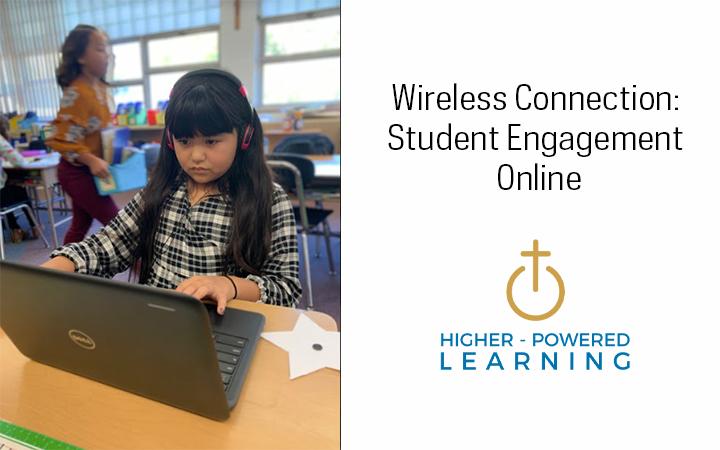"I'm not in the room with half of my students, how do I make sure they're getting all they can from class?"
We're often asked by teachers in the Higher-Powered Learning Program for resources to engage students working online. While our blended learning practitioners felt more prepared to transition to distanced/hybrid learning, these learning situations still pose unique challenges for engagement. Below are several approaches to engagement we've found successful; we hope these resources and strategies will increase student engagement both now and after we all return to the classroom.
For more thoughts on engaging students online, check out our posts on fostering classroom community through eLearning and the social-emotional connection of blended learning.
What Engages Students?
You work hard to make dynamic, energetic lessons, so why don't they always lead to more student engagement? Consider: when a company has a commercial you love, do you automatically want to buy their product? Not necessarily. You'll only buy it if an internal drive or need motivates you to, whether or not the commercial was great. The same is true for students and engagement. Horn & Staker, authors of the book Blended, observed two driving factors which bridge that gap:
"First, they want to feel successful. They want to feel that they are making progress and accomplishing something, rather than experiencing nothing but repeated failure or running up against walls. Second, they want to have fun with friends. That means they want positive, rewarding social experience with others, including with peers, teachers, coaches, advisors, and other potential friends." (p. 143-44)
Try leveraging software to spark these driving forces. Create a backchannel conversation on Google Classroom to centralize student questions and comments for the day; distanced students can reply to and connect with each other. Revisit old backchannels as a group to show how much forward progress has been made. Google Classroom allows you to assign questions; how can you leverage this to promote a feeling of progress and connection with others? How might Zoom's "nonverbal feedback" bolster feelings of forward movement? Consider the affordances of software like NearPod, which allows for interactive activities and student interactions, or PearDeck for Google Slides, which prompts real-time questions during presentations. Everyone wants to feel progress and make connections with friends—design your lessons around those motivating factors!
Structuring Online Conversations
One block to engagement may be uncertainty about the "rules of discussion" in the online/hybrid format. There are learned procedures in any conversation which guide how long you talk, where you should look, and so on. The procedures your class learned for conversation have been interrupted by hybrid settings, and your students are likely unsure of the new format's "rules." New procedures must be established to counteract this uncertainty and empower students' communication. As Harry Wong writes in The First Days of School, "When the students know how the class is run, they will be more willing to do whatever you want them to do."
One system of conversational procedures we particularly like is Kagan Structures. Discussions are structured in quick, easy-to-learn formats. For example, during a "Timed Pair Share" students alternate speaking for a predetermined length of time. For "Draw What I Say," one student explains their thinking while the other makes a picture to represent what they hear. Once students have clear procedures for discussions, they can spend conversations focused on content rather than format. Kagan's "structured conversations" can be adapted for online/hybrid use. Structuring conversations promotes high-impact, student-driven work time, whether in-person or online.
Have approaches that engage students in your online setting? Please share in the comments below!
 Alliance for Catholic Education
Alliance for Catholic Education
